The Irony of YouTube: Politicking Cool
by Jessie Blackburn
In an effort to understand how the Internet was used to bring the youth voter to the polls on Election Day and why it is not being used to bring that same constituent into the healthcare reform debate, this article examines one of the most intriguing pieces of online political dialogue to circulate YouTube during the last few weeks of the presidential campaign. The widely circulated YouTube video known as "5 Friends" features high-profile celebrities ironically encouraging viewers to see the act of voting as a "trendy," even "hip" behavior. In this article, I refute the assumption that youth voters lack political stamina beyond the ballot boxes, and I reframe our assumed disengagement with healthcare reform as being, instead, a response to the absence of multimodal political discourse being aimed our way.
I was driving to work and listening to public radio the day after President Obama delivered his televised healthcare reform speech to a joint session of Congress. The morning discussion was a bantering back and forth between healthcare specialists, political correspondents, and listeners of the show. Most of the questions were fairly run of the mill, but then a call was taken from a person the radio host introduced as an “unusual demographic.” The host’s introduction went something like this: “I want to introduce our next caller. Caller, if my notes are correct, you are a high school student?” The caller responded: “Yes, that’s correct. I am a senior.” The host then replied, “Well, we are glad to hear from such an unusual demographic.” At that moment, I was struck by what the host was implying, and I was conflicted as to whether I agreed with him. By naming teenagers an “unusual demographic” in matters of politics—such as healthcare reform—the host was relying on the assumption that America’s youth just don’t pay attention to politics. With the election of President Obama, we know this belief to be false with the record-setting youth-voter turnout. Why was this host so quick to assume that the youth voters have vanished again and taken their political participation with them? Then it occurred to me: The outpouring of youth participation we saw during the Obama campaign, particularly the viral video sensations that so freely circulated on YouTube in the run-up to the November election, has yet to materialize around the healthcare reform debate.
So I did a little poking around on YouTube to see if this perception held up to the reality. Eventually I did find a small collection of pretty snappy PSAs by rockthevote that did, in fact, utilize some of the same sarcasm, irony, and star-power that implored the YouTube generation to game the democratic electoral system and be heard on Election Day. However, we really don’t see YouTube being used with the same widespread popular urgency to address the political word of the day: healthcare. Where is Hollywood now? Where are the YouTube videos filled with multi-millionaire celebrities calling for our participation in the healthcare reform debate? Their absence implies the assumption that YouTubers will vote on Election Day but not organize around healthcare reform or that healthcare reform is too complicated to sell to young party members (conservative or liberal). I had to go back and look at how YouTubers did it during the presidential election. I had to ask myself, as someone who is just on the cusp of belonging to the YouTube generation—a term I’ll define in just a moment—whether all those celebrities who spoke to us through our computers had invaded YouTube just long enough to achieve the short-term goal (albeit one that packed a ton of political power) of electing a “cool” president but not of keeping us politically active.
Is YouTube Politics Trendy?
As the 2008 election drew near, it was speculated that the youth voter, who was largely seen as digitally connected and driven by popular culture, might sway the election. An article in The Philadelphia Inquirer aimed at describing the YouTube generation and its political tendencies explains:
This is a generation, after all, raised on the savagely barbed topical lampoonery of The Simpsons and South Park. Irony is mother's milk to them. Only 10 percent of 18-to-24-year-olds watching TV are tuning in to the evening news on ABC, NBC and CBS combined this season, according to figures provided by Nielsen Media Research. By comparison, 13 percent of 18-to-25-year-olds say they watch The Daily Show regularly as an information source, according to a study released in January by the Pew Research Center for the People and the Press (Shister 2).
Although hardly a predictor of voting, this data does point to changes in how youth voters engage with politics, which is further correlated to their participation on the Internet. For example, the 2007 Pew Internet and American Life Tracking Survey found that 76% of those viewing online videos are between the ages of 18 and 29; furthermore, “for young adults, comedy is a bigger draw, with 56% watching humorous videos, compared with 43% of internet users ages 18-29 who say they watch news videos” (Madden 3). These findings, and others like it, suggest that the youth voter gleans political information from wider, less-conventional venues found online. We see this virtualized in one of the hottest political videos of the election season to make its rounds through YouYube: “5 Friends” (see Figure 1). Distributed on October 1, 2008 (roughly one month shy of Election Day), this PSA, which encourages viewers to vote, lasts 4 minutes and 45 seconds and features some of America’s most influential pop-icons. This video is notable not only for its celebrity star power but also for its use of irony.
Figure 1
In an effort to harness the collective voting power of its target audience, “5 Friends” appeals to the potential viewer who is most likely to see it as a form of entertainment: the youth voter, who is perhaps less interested in watching online news videos than older voters and who—statistically speaking—is more likely to be drawn to a political YouTube video if it is driven by comedy and satire. No political phenomenon found on YouTube better encapsulates the need to reach online viewers through the use of ironic quips and sardonic rhetoric than does “5 Friends,” which frames the act of voting as a celebrity behavior and forwards the notion that voting is a hip and trendy performance among celebrity entertainers and insiders.
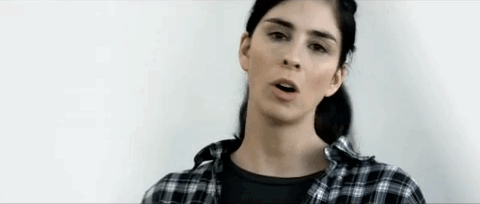
Figure 2
In addition to its use of sarcasm, satire, irony, and wit, what may be most striking—and effective—about “5 Friends” is its normalization of celebrities. Relying implicitly on the high-profile, elite, celebrity status of the stars, the video speaks to the target audience through its use of familiar pop idols dressed like everyday, average citizens (see Figure 2). The video runs in and out of focus, suggesting something of a personal, home-video quality instead of its actual professional, production-studio quality. This, too, adds to the personal and private appeal of “5 Friends.” Addressing each individual viewer sitting in front of her/his computer screen, the celebrities look directly into their eyes and transcend the material and physical boundaries that are often present between celebrities and fans. With an absolutely barren white backdrop and a black frame, the video features direct eye contact and direct address instead of the normally insulated celebrity surrounded by body guards and encourages the audience to feel spoken to or seen by those who are typically on the receiving end of the public’s gaze. The camera shots suggest a hand-held or home video quality through the use of off-centered framing and random zoom-ins and zoom-outs. The sound quality has a slight echo, also suggestive of a novice production quality typical of the everyday YouTube, home-video maker, which is certainly not typical for Hollywood, the celebrities starring in the PSA, or Leonardo DiCaprio’s personal production studio, Appian Way, which filmed “5 Friends”. In short, this video serves as an entry point for Hollywood to co-opt the informality of Internet video production, which ultimately is the popular discursive space of the YouTube generation. In a twist on the tactics typically used by political parties in their efforts to garner votes, “5 Friends” attempts to persuade the young viewer to vote, not because it is a patriotic act—because it is clever and au courant!
Get the Joke, or Be the Joke! . . . or “God, I hope You Have at Least 5 Friends!”
On the surface, the power of this video is its celebrity informality, but its real strength lies in the average viewer the actors create over the course of the script. Speaking directly to its audience, the video frames the viewer as the lethargic, apathetic, apolitical youth voter (a familiar stereotype that has been applied to my generation and other young voting generations). In other words, “5 Friends” relies on its audience’s ability to recognize the familiar stereotype and to be drawn in to share the inside joke. Essentially, the YouTube generation is necessarily aware of the stereotypes surrounding its political inaction, and this imposed universal assumption that “5 Friends” relies upon is essential to the video’s meaning. The audience’s awareness of this false truth is prerequisite to getting the joke. “5 Friends,” if only taken superficially, would never have worked. Its meaning would have been lost, the message would have been taken literally, and its popularity would have floundered. (In contrast, the video’s YouTube counter currently registers more than 2,228,796 site visits.)
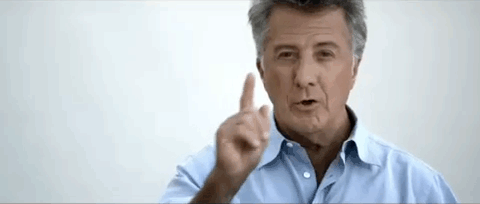
Figure 3
The video opens with DiCaprio looking directly into the camera and stating, “Please . . . just . . . don’t vote.” He is then followed by nine different celebrities repeating the phrase “don’t vote” while shrugging their shoulders, shaking their heads, pointing their fingers directly at the screen, and rolling their eyes (see Figure 3). Forrest Whitaker even declares, “You don’t care,” with a slight grin on his face. All of these celebrities are dressed in casual attire, with some wearing ball caps and others with ponytails, and none are wearing obvious makeup or flashy jewelry. The celebrities perform their anti-celebrity personas, which strike an obvious contrast to their more public red-carpet, awards-ceremony apparel of designer gowns, tuxedoes, and gem-studded jewelry. It is this false suggestion of social and economic equality with the audience that authorizes the persuasive power of “5 Friends.”

Figure 4
The camera then zooms in on DiCaprio’s face—in fact, cutting off the top of his head so that his eyes are directly in the center of the shot. With a furrowed brow and an emphatic tone, he states: “This is one of the biggest financial disasters in American history.” The camera then immediately cuts to Ashton Kutcher wearing a baseball cap and a scruffy beard, tossing his head to the side and exclaiming, “Why would you vote? WHY would you vote?” Jonah Hill then states: “Who cares that the economy is in the toilet? Who gives a shit? I don’t care—I’ve got so much money” (see Figure 4). The situational irony is hard to miss and goes a long way toward driving home the video’s central theme. On the surface, we have multi-millionaires appealing to a young-adult audience based upon a shared concern: the economy. Obviously, the average American between the ages of 18 and 29 does not earn the millions of dollars that Hollywood celebrities earn annually. Yet this very internal paradox makes “5 Friends” work by drawing the viewer in as an insider with a particular understanding of the supposed truth of the video. In other words, the viewer of this YouTube video will be entirely duped by the script unless the viewer understands that what is being performed (celebrity millionaires are worried about their personal finances) does not agree with what the performed situation implies (average Americans should be worried about their personal finances).
The video then turns to a run of faces (Courteney Cox, Laura Linney, Natalie Portman, Jennifer Anniston, Jamie Foxx, and others) to expose the gap between the rhetoric of apathy and the stakes of not voting. They begin listing off all the reasons why the audience should not vote:
Because who cares, you know, about your children’s education.
Reading? Literacy? Really?
You’re right, don’t vote.
[. . .]
Who cares about global warming and the fact that. . .
. . .our polar ice caps are melting.
I hear polar bears can swim!
I forbid you to vote.
Stay where you are.
Don’t vote!
[. . .]
Who cares. . .
. . .about the war on drugs?
I’ve never fought a war on drugs. I’ve never done shit on drugs besides played Halo 2!
DO NOT VOTE.
There’s no point.
Why?
Who cares about Darfur?
Darfur. . . . I don’t even know what the fuck that is. That sounds like a t-shirt company to me.
The combination of verbal irony (i.e., don’t vote really means do vote) mixed with situational irony (i.e., celebrities not caring about politics really means that the fans should mimic their concern) works to create several meanings, including a shared concern for political platforms ranging from reading and literacy to Darfur—regardless of one’s political affiliation. Obviously, the audience is meant to feel embarrassed at this point if it has not yet caught on to the sarcasm.

Figure 5
The tone then turns very angry. The celebrities begin to over-enunciate and yell, and the pace of the shots picks up, switching from one clip to the next in rapid-fire succession (see Figure 5). “You don’t care. I don’t care. Don’t vote. Whatever you do, DON’T VOTE. Nobody is listening to you so, hey, you know . . . fuck it!” Through this satirical caricature of the lazy, apathetic youth voter, the identity that “5 Friends” has created for its viewer begins to turn against that very audience, and the viewer’s agency appears to be constrained. Essentially, by suggesting that “nobody is listening to you,” the PSA entices the audience out from behind the computer screen and into the voting polls in an attempt to be heard. Once the audience is conscious of its own political restraints, suddenly apathy is not the video’s message. Oppression is the video’s message—taking the underlying stereotype of the youth as apolitical and lazy and renaming the subject as political but subjugated. By framing the youth voter as silenced, restrained, and ignored by its voting elders, the YouTube generation is given the keys to its own liberation: the ballot! (see Figure 3).
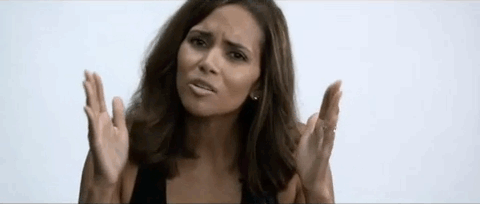
Figure 6
At this point, the video slows down. The focus zooms in, and the eye contact is consistent. Suddenly, the message becomes more intimate; the celebrities perform inclusivity, and the audience becomes an insider to the message (see Figure 6). The audience is told,
Don’t vote . . . unless you care about healthcare.
[. . .]
Then maybe you should actually reconsider, and maybe you should vote.
[. . .]
Or your future, or the world, or our country.
Everything.
[. . .]
I care.
Does that matter to you? Because if it does, then maybe you ought to vote.
Here we see “5 Friends” capitalize on its own celebrity status in an ironic twist. Where the visual rhetoric (i.e., casual clothes, baseball caps, ponytails, bland backdrop, sloppy framing, etc.) treats the celebrity as the every(wo)man, the subtext of the message suggests, “Your generation is obsessed with me and my lifestyle, so do as I do: Vote!” The audience, which expects an invisible boundary between celebrities and fans, is being noticed by celebrities—thereby implying the removal of that boundary by placing the celebrity on home computer screens while speaking directly to the fans. We see the celebrities—who typically demand their seclusion and adamantly critique the paparazzi for invading their privacy—capitalize on their own fame and rely upon their fans to “behave as usual” and consume the celebrities’ popular message, which in this case is to vote. The viewer is not so much aligning with a particular celebrity but conforming to the social category of cool the celebrities collectively encourage young viewers to embody. In a subversive move, for instance, the celebrities even attempt to embarrass their audience into being cool, stating:
You do know that you have to register to vote, right?
I mean, you do know that, right?
[. . .]
I can’t believe I’m even saying this.
You must register in order to vote.
[. . .]
You are probably online right now, aren’t you?
[. . .]
You're obviously smart enough to play Scrabble on this thing . . . or poker or whatever you're doing . . . or porn . . . . I, it's, it’s none of my business.
[. . .]
What are you up to later on? You wanna hang out? After you’re done registering, that’s a possibility.
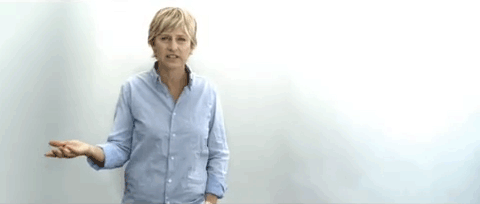
Figure 7
The celebrities are now personally judging the audience. Ironically, the judgments (i.e., you are not smart, you are lazy, you play computer games all day, you won’t even vote if it’s easy, etc.; see Figure 7) that are now being lobbed at the YouTuber by the celebrities are not unlike those that “5 Friends” sought to overturn earlier in the message. The celebrities are now using the same stereotype that they deconstructed earlier in the message as the scaffolding upon which they balance their message, which is now: “So that you can prove to me that you are cool like me, vote!”
In case the audience is not clear that its identity is at stake at this point, the celebrities even attack the viewer’s own popularity:
I need you to take this and send it to five people.
Just send it to five people that care as much as you think you care.
Five friends!
God, I hope you have at least five friends.
[. . .]
They’ll watch it. They'll do the same thing.
[. . .]
One. Two. Three. Four.
Five. Five friends.
And then it will be exponentially. . .
Five friends and five friends and five friends.
Not only does “5 Friends” suggest that the youth voters will become celebrity-insiders who can “hang out later” once they become initiated by the ballot box, but it also suggests that the YouTube voters who pass the video along will gain membership into the larger cyber-community of cool people who vote. They will gain exponential popularity simply by participating in the viral, popular communication practice of passing along a YouTube video, the modern day equivalent to a chain letter.
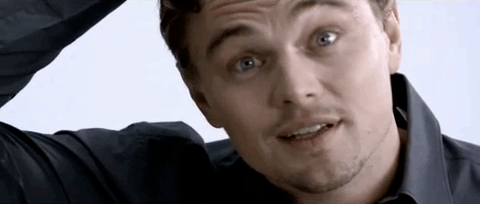
Figure 8
As the PSA comes to a close, the camera zooms in for its tightest close-up, and the audience is looking directly into the imploring eyes of Leonardo DiCaprio (see Figure 8), who whispers intimately, “I mean seriously, after all of this—after this whole video—if you're not going to vote, I don’t even know what to say to you anymore.” Reminding the viewers of how quickly they could become outsiders again, DiCaprio suggests that there is a personal relationship now between the celebrities and the individual viewers because the fans have become insiders due to their ability to decode the ironic message behind “5 Friends.” Furthermore, stating “if you're not going to vote, I don’t even know what to say to you anymore” suggests that similar personal and direct communication between celebrities and fans will continue through YouTube only if the desired outcome occurs and the fans vote. We see the final ironic blow here: “5 Friends” is not entirely concerned with overturning the apolitical stereotype and turning the YouTube generation into long-term political activists. “5 Friends” wants to barter celebrity access for one day’s vote on Election Day. After that, the boundaries between celebrities and fans will return, and the paparazzi, bodyguards, and tabloids will reclaim their roles in securing the boundaries between those who are famous and those who are ordinary.
Hollywood (Like Congress) Must Have Rockin’ Good Healthcare!
Where are the celebrities of “5 Friends” now? Why haven’t they reunited to follow up a motivational message about voting with one that emphasizes political participation in the healthcare reform debate? If the millionaire celebrities of “5 Friends” can get away with implying that they are worried about their personal finances during this economic crisis, why couldn’t they get away with the equally preposterous irony of fearing their inability to pay for their own healthcare (a reality that the average YouTuber is more likely to face)? If “5 Friends” can frame the YouTuber as ignored and politically subjugated by its voting elders, why can’t a sequel suggest that the youth voters’ opinions on healthcare reform are being excluded? Whatever the specific impact of “5 Friends,” the presidential election of 2008 proved that YouTubers—regardless of political leanings—do indeed participate in politics. I can’t help but wonder, though, if the demographic of the YouTuber involved in the healthcare-reform debate might not be so unusual if the boundaries between the politics of healthcare reform and clever online entertainment were blurred—as seen in “5 Friends.”
In other words, maybe we need to reframe the question of “Where did the youth voters go?” Instead, I’m asking, “Where did the communication with the YouTubers go?” If my fellow YouTubers and I are interested in witty, humorous, intelligent, online political discourse, then I have to wonder why the venue is not being used as a way to communicate with us during such a critical moment in our cultural landscape (critical enough, apparently, for a member of Congress to scream “You lie!” during the president’s September speech). Perhaps the Democrats and Republicans don’t need the support of their YouTube constituents to pass a bill, and so perhaps they do not think to incorporate new and innovative communication strategies to acknowledge us and to keep us engaged and active. Perhaps Hollywood is waiting for a topic that is a tad bit sexier than healthcare reform to instigate a “5 Friends” reunion. I suspect, however, that when the midterm election approaches, the Obama campaign, his opponents, and celebrity supporters will start exercising their multimodal muscles and once again return to YouTube to woo our votes.
References
“5 Friends Uncensored.” YouTube.com. 1 Oct 2008. Appian Way. Retrieved 9 Mar. 2009 from <http://www.youtube.com/watch?v=0vtHwWReGU0>.
Long, Bryan. “’Daily Show’ Viewers Ace Political Quiz: Survey Reveals Late-Night TV Viewers Better Informed.” CNN.com. 29 Sep. 2004. Retrieved 9 Mar. 2009 from <http://www.cnn.com/2004/SHOWBIZ/TV/09/28/comedy.politics/>.
Madden, Marry. “Online Video.” Technology and Media Use. 2007. Pew Internet & American Life Project. Retrieved 2 March 2009 from <http://www.pewinternet.org/pdfs/PIP_Online_Video_2007.pdf>.
Shister, Gail. “Young Adults Eschew Traditional Nightly News for ‘The Daily Show:’ They’ll Take Jon, and That’s The Way It Is." The Philadelphia Inquirer. 13 May 2007. Retrieved 9 Mar. 2009 from <http://www.philly.com/inquirer/columnists/gail_shister/20070513_Young_adults_eschew_traditional_nightly_news_for__quot_The_Daily_Show__quot_.html>.
Fair Use Statement
The author declares that the use of the photos/images in this article is for purposes of “criticism, comment, news reporting, teaching, scholarship, or research” according to Section 107. - Limitations on exclusive rights: Fair use, U.S. Copyright Code. The resulting work on “5 Friends” is a creative endeavor with value added through unique and original selection/arrangement of material and information, critique, expression, and classification of information.
Jessie Blackburn is a doctoral candidate in Composition, Rhetoric, and Literacy at the University of Arkansas. Her research is situated at the intersections of feminist composition pedagogy, New Literacy Studies, and the freshman composition classroom.
This work has some rights reserved under a Creative Commons Attribution-Noncommercial-Share Alike 3.0 License.